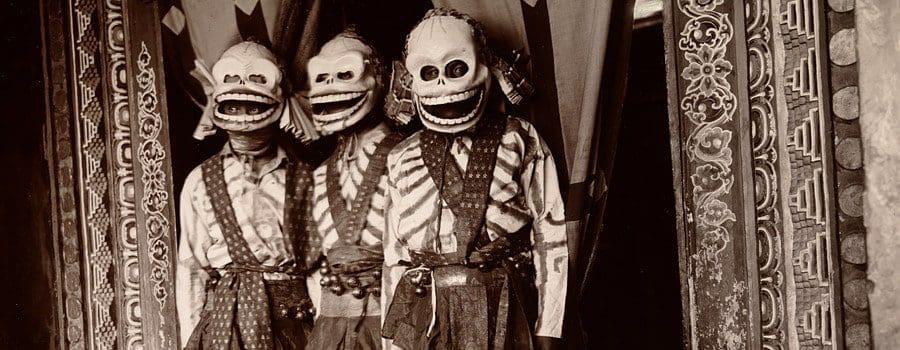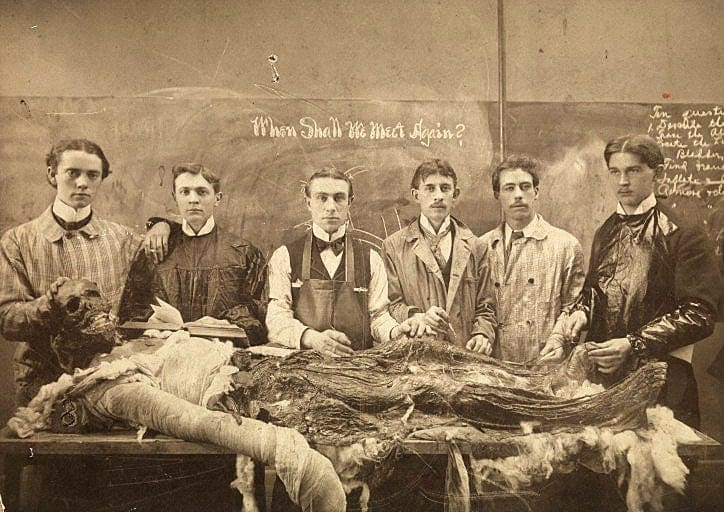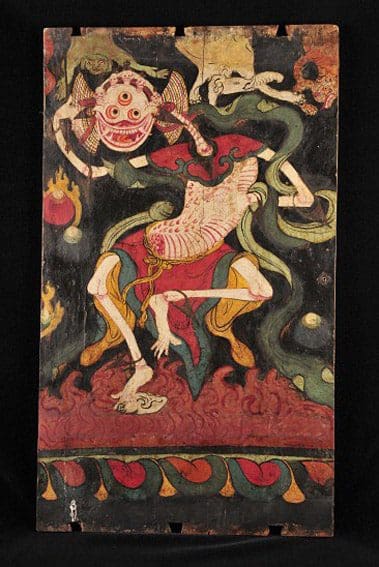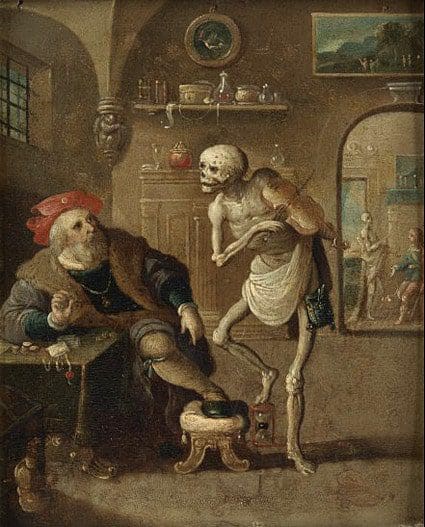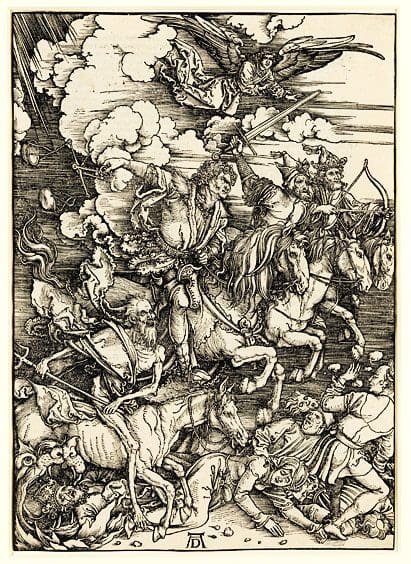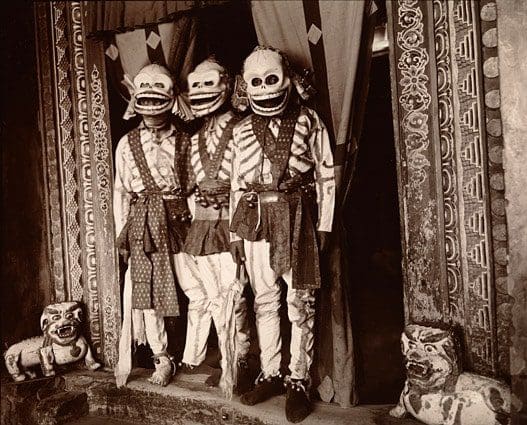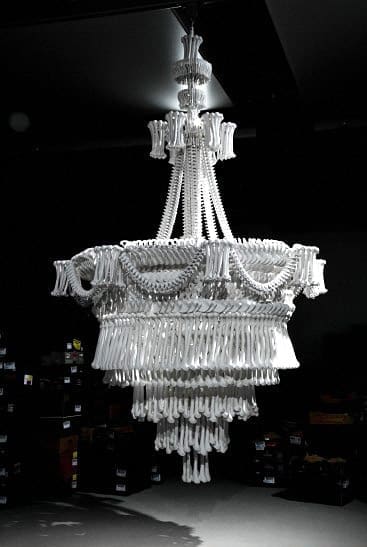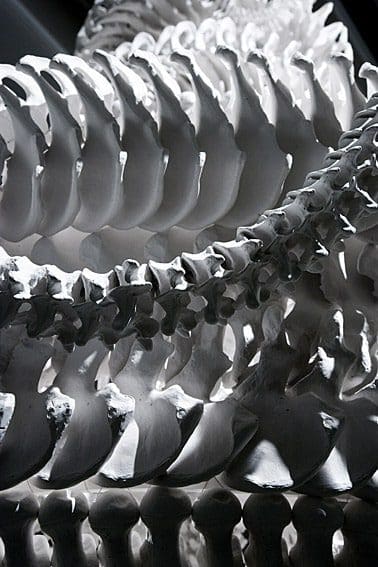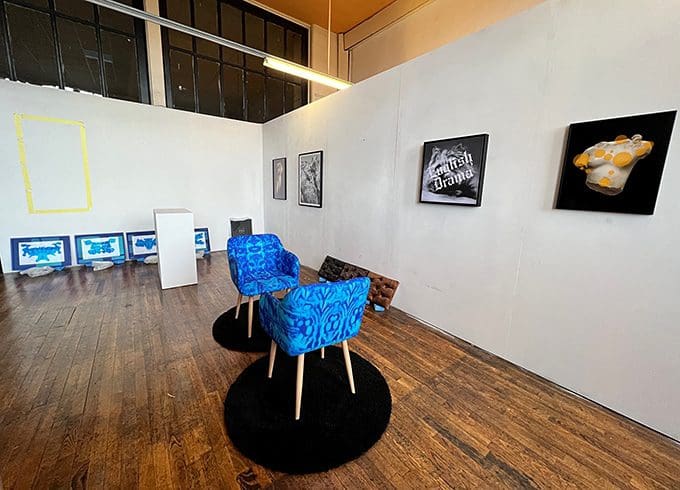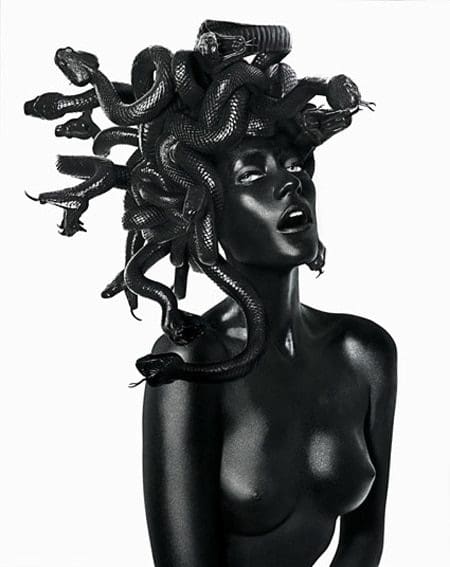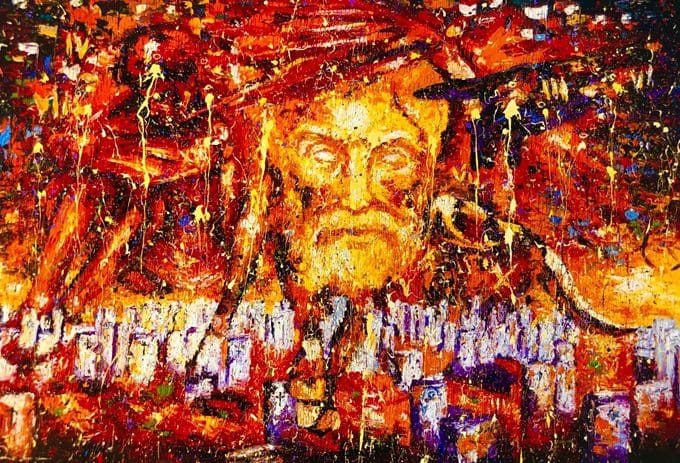“Ars longa, vita brevis” – Life is short, Art eternal.
‘Death: A Self Portrait’ at the Wellcome Collection in London exhibits an array of around 300 diverse works devoted to the iconography and aesthetic that surrounds the theme of death.
Richard Harris, a former antique print dealer based in Chicago, has assembled the exhibition out of his collection of over 2,000 objects. The uniqueness of the exhibition lies in its breadth; it is not a celebration of trophy pieces, but is fascinated with objects that are of seemingly inconsequential value. Photography, sculptures, paintings, postcards and ephemera are all amassed to capture the essence and experience of mortality, throughout history, culture and time. Harris is determined that the exhibition is not supposed to be morbid but instead moving, interesting, sometimes comical, probing us to explore the notion of dying as a crucial part of living.
The first room, ‘Contemplating Death’, opens the exhibition with the difficult questions that surround our acceptance of death. The concept and style of “memento mori” (remember you will die) was established as a materialistic way to reconcile people with the transience of life by presenting it as something aesthetically beautiful. The image of the skull became a visual aid to meditation, previously only used as a scientific symbol to represent one’s grasp of medicine and anatomy. Barthel Bruyn the Elder’s doubling in Portrait of a Man / A Skull in a Niche (1535-55) stresses our inescapable human mortality. A realistic painting of a human skull sits in the niche of a framed portrait of a gentleman. Half a century on, Kiki Smith replicates this process by creating a bronze skull cast from her own head, and Robert Mapplethorpe photographs a skull-handled cane as a trope to represent his own fast approaching death from AIDS. These three examples from different points in history all stand as testimony to the cacophony of human experience in Harris’s collection.
The second room, ‘The Dance of Death’ focuses on the universal certainty of death. Harris draws on the concept of “Danse Macabre”, an art historical happening that promoted the concept of death as a levelling process, taking us all regardless of social status. The reality of death is omnipresent. George Grosz’s photographic collage Faces of Death (1958) uses skulls to replace human features or hides them in everyday scenes. There is something slightly humorous about Grosz’s photomontage that is also exemplified by some of the older etchings and illuminated manuscripts in the room. Skeletons leap, dance and celebrate. Puppets, from Tibet and America, contribute to this sense of movement and vivacity.
In sharp contrast, the third room, ‘Violent Death’, is the most moving and disturbing, three incredible anti war manifestos by Jacques Callot, Goya and Otto Dix are displayed. The earlier visions of jovial skeletons are reduced to farce by these grotesque and unflinching prints of victims, soldiers, death and destruction. The display of Dürer’s woodcut Four Horsemen of the Apocalypse (1498) lingers over the artworks as a metaphor for the chaos and damage caused by death’s unstoppable nature.
‘Eros and Thanatos’, the fourth room, meditates on the psychology of Sigmund Freud to explore the latent human instincts that attract us to death, sex and pain. An erotically macabre sketch, L’Agonie (1896) by Félicien Rops, depicts a skeleton performing cunnilingus on a voluptuous woman alluded to be St Theresa. Rops embodies the obsession with and conflation between death, religion and sexual ecstasy, the concept of orgasm as a ‘petit mort’ or little death. A series of sentimental and moralistic postcards executed in the style of vanitas are displayed in this room. Vanitas images, much like memento mori, are set to impose the transience of life, futility of pleasure and the certainty of death onto the viewer. These postcards are metamorphic; depicting smiling couples fading away into hollow skulls. A collection of dissection photographs, significantly When Shall we Meet again? (1900) which depicts a group of posing medical students grinning over a flayed corpse, portrays a perverse fascination with the display of death. John Isaac’s gruesome sculpture of a contorted and excoriated body; Are you still mad at me? (2001) reads as an uncomfortable allegory for brutal reality that surrounds anatomical practise.
The final room, ‘Commemoration’, centres on the rituals and religious practises that are associated with death, burial and mourning across the world. Photographs by Dana Salvo and Graciela Iturbide focus on the Day of the Dead festival in Mexico as an example of alternative cultures that celebrate death. Sugar skulls and skeletons line the walls as a physical aid to the themes evoked by the personal photographic accounts. References to ethnographic explorations emphasise the objectification and categorisation of the human body throughout history. The last piece in the exhibition is Jodie Carey’s spectacular In the Eyes of Others (2009). A vast chandelier made up from 3,000 plaster casts of bones. Carey’s work is a testament to the sentiment of the whole exhibition, affirming how death is a powerful inspiration for art, as a symbol, as a memory, and as a way to interpret and represent our own bodies.
‘Death: A Self Portrait’ closes on the 24th February 2012 at The Wellcome Collection, 183 Euston Road, London NW1 2BE. www.wellcomecollection.org
words Philomena Epps

